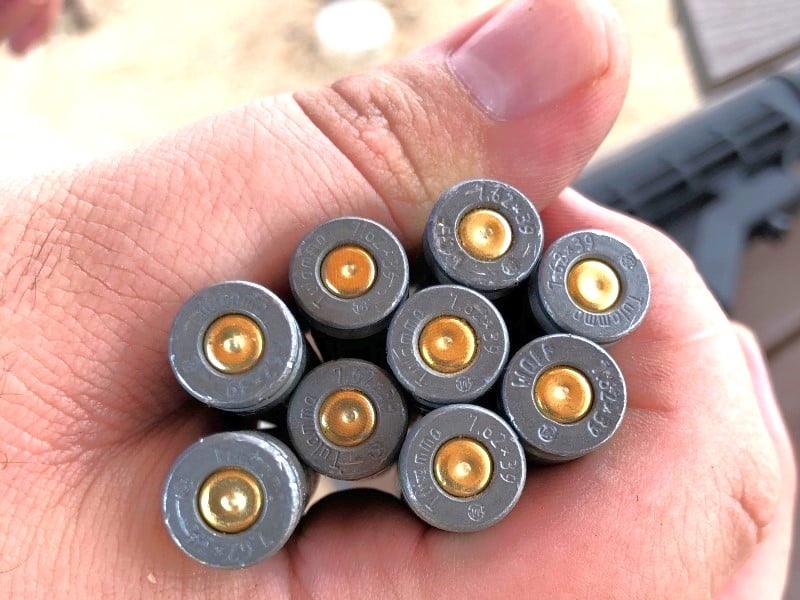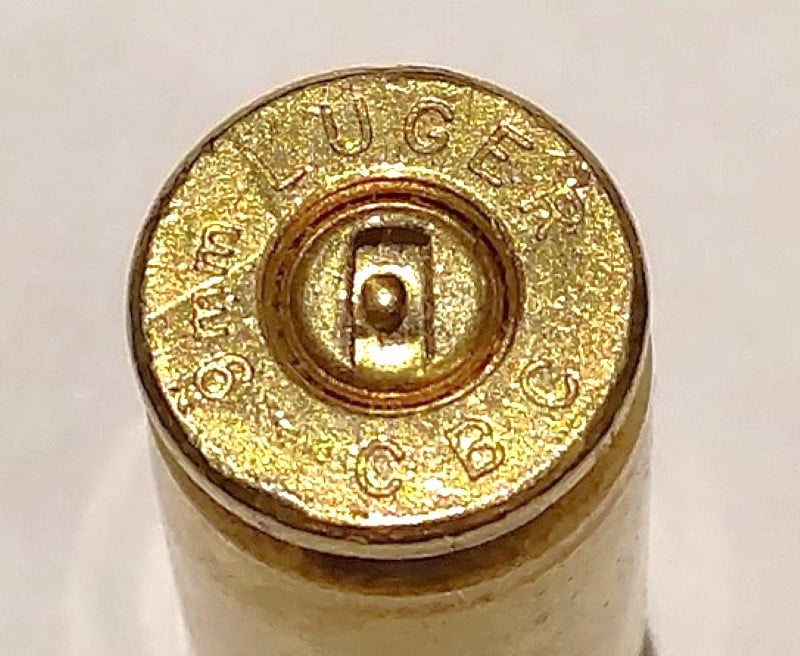What is a light primer strike? Why is it important for you to know? What causes light primer strikes? Let’s answer those questions below.
The Light Primer Strike
A light primer strike is when the primer (the detonating portion of the cartridge) is not hit hard enough by the firing pin to detonate the cartridge. It sounds simple enough and harmless enough, doesn’t it? Maybe not.

Danger, Will Robinson!
A light primer strike can cause a hang fire. A hang fire is when the cartridge doesn’t detonate immediately when the trigger is pulled. If you know for certain a round is in the chamber and you get a “click”, a hang fire is a possibility.
It’s possible the firing pin did a light strike on the primer. While the primer doesn’t immediately go off, it’s remotely possible it will go off shortly. Most of the time, a hang fire will detonate the round within a few seconds. However, it’s possible that it will detonate after several seconds. The recommended wait time is one minute just to be safe.
If you eject a shell that is a hang fire and the round detonates outside the chamber, you’re in for a special surprise (and not a good one). The chamber normally contains that explosion if all is working well. But since you ejected the round, it could happen out in the open (heaven forbid you are holding that round in your hand).
I once saw a video of a shooter who pulled the trigger on a military bolt action rifle, and he got a “click.” After a few seconds, he shrugged and set the rifle on his shooting table. He got up from his seat and was about to go down range to check his target. Suddenly, the rifle went off, jumping off his shooting table! Imagine his surprise.
Yes, it’s best to wait a minute and give the faulty round time to decide what it wants to do. Understand that not every light primer strike will result in a hang fire, but do you want to take that chance?
Immediate Action Drills
Many of us who train in the defensive use of firearms are taught Immediate Action Drills in the event that we get a click instead of a bang or experience another stoppage with our firearm.

A common drill is “Tap, Rack, Bang.” Tap the base of the magazine to make sure it’s correctly seated, rack the slide, and then, if warranted, pull the trigger (bang). In a defensive situation, we won’t wait around to see if we have a hang fire on our hands. However, in training, we might be ejecting a round that’s about to detonate. Just something to think about.
Causes of Light Primer Strikes
By now, some folks are scratching their head trying to figure out what causes light primer strikes. Simmer down; I’m one step ahead of you. Answers are at hand, and the truth shall set you free!
Ammunition
Sometimes, the issue can be traced to ammunition. Some types of ammo have hard primers, and this is frequently the culprit. Sometimes, the issue is with military surplus ammunition, but it can also happen with commercial ammo. It’s not often a problem, but it does rear its head from time to time.

If you’re experiencing light primer strikes, the first thing to do is to run a few different types of ammunition through the gun from various manufacturers. You might narrow down the culprit quickly. If one type of ammo won’t work but everything else does, you’ve likely just found the fly in the ointment.
Sometimes, if the primer is sunk too far down into the case, the gun’s firing pin can’t quite reach it sufficiently for a solid strike. In that case, you’ll experience light strikes.
Reloaded ammunition is often a cause of light primer strikes. I know everyone who reloads ammo likes to brag about how awesome their particular ammo is. The truth is people sometimes make mistakes. Reloaded ammo is a major culprit for mistakes. One tiny error reloading can cause any number of things to go wrong.
The Firearm
If it’s not the ammunition causing the issue, the only other explanation would be the firearm. A few various things can be at play in this case. Springs, firing pins, strikers, and hammers are either too weak or just plain worn out.
A firing pin spring may be weak, worn, or the firing pin could be broken. A damaged firing pin might not reach the bullet’s primer for a full strike; hence a light strike happens.
An especially dangerous situation can occur if a firing pin tip has broken and not dislodged itself from the port. In that case, if it’s stuck in the port and protruding, a chambered cartridge could cause it to go off as soon as the bolt face contacts the shell should the broken piece hit the primer.

Incorrect headspace can be another issue. Headspace can also be affected by a faulty cartridge, debris, or a new, non-fitted part. Sometimes, an improperly fitted ejector or extractor can cause these issues.
Dirt may also be a cause. A dirty firing pin channel can interfere with the movement of the firing pin by not allowing it to fully reach the bullet’s primer. Cleaning the firing pin channel is a good idea. However, it is NOT a good idea to add lubricant to that channel as it typically serves no purpose aside from gathering more dirt and gunk to mess up your firearm. Clean it and leave it be.
Dirt between the bolt face and the cartridge can create a tiny bit of space that’s enough to keep the firing pin from a proper strike. A dirty space where the extractor seats can also throw off the headspace just enough to cause light primer strikes.
Fixing Light Primer Strikes — Clean it!
After checking to make sure the ammunition isn’t the cause, a good first step might be to clean your firearm. As mentioned, the firing pin channel needs to be clean so the firing pin can travel unimpeded.
The chamber area, bolt face, and extractor also need a good cleaning to ensure dirt isn’t throwing things off.
Clean Ammo
We all love a bargain, myself as much as the next guy. Frequently, the cheaper the ammunition, the dirtier it shoots. Low-quality components such as powder make the ammo cheap. They also make it filthy much of the time. That filth builds up and can cause the problems we discussed above.
Nowadays, for my defensive pistols and rifles, I try to buy the best ammo that I can afford. Ammunition from reputable makers is normally a lot cleaner than foreign ammo produced overseas. Additionally, the primers used by quality ammo manufacturers in the United States are usually higher quality; thus reducing issues.
In Conclusion
We covered the basics as far as what may cause light primer strikes, some repercussions, and how to remedy them.
I’m not an expert gunsmith. If these fixes don’t work for you, or if you have any doubts as to your own abilities, I highly recommend consulting a qualified gunsmith. You especially don’t want to take any chances with firearms that you have for defensive use; it’s just not worth it.
Keep your powder dry and your shootin’ irons clean until we meet again!


